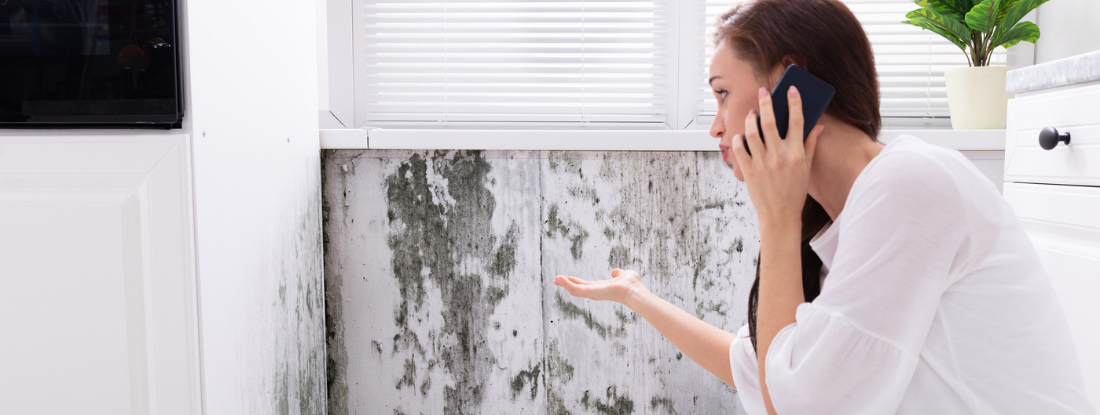Specialist Tips for Message Mold Remediation Success
In the world of mold remediation, successfully removing mold is only half the battle; the real challenge exists in avoiding its reappearance. By adhering to skilled tips and ideal techniques, people can secure their rooms versus mold and mildew revival and maintain a healthy and balanced indoor setting.
Monitor Moisture Degrees Routinely
Normal surveillance of moisture levels is necessary in making certain the effectiveness of blog post mold and mildew removal initiatives. After finishing mold remediation procedures, keeping optimal moisture levels is vital to stop mold and mildew re-growth and ensure a healthy and balanced indoor setting. Tracking humidity levels allows for early discovery of any type of spikes or changes that could potentially result in mold and mildew rebirth. High humidity levels over 60% create a favorable setting for mold and mildew to flourish, making regular keeping an eye on an aggressive procedure to stop any kind of future mold problems - testing air quality after mold remediation.
Utilizing hygrometers or wetness meters can help in accurately determining moisture levels in various areas of the building. These devices provide real-time data that allows remediation professionals to make enlightened decisions relating to ventilation, dehumidification, and other essential activities to preserve optimal humidity degrees post-remediation. Additionally, establishing a regular timetable for humidity checks, specifically in risky locations such as basements, kitchen areas, and shower rooms, is a proactive strategy to mold and mildew avoidance. By consistently keeping an eye on humidity degrees, residential or commercial property owners can successfully minimize the threat of mold reoccurrence and preserve a healthy and balanced indoor atmosphere post-remediation.
Conduct Thorough Inspections Post-Remediation
Following the conclusion of mold and mildew remediation treatments, it is necessary to carry out comprehensive evaluations to verify the performance of the remediation procedure. These post-remediation assessments are essential in guaranteeing that the mold problem has actually been effectively dealt with and that there is no recurrence or staying mold development. Assessments ought to be accomplished by certified experts that have competence in recognizing mold and assessing indoor air top quality.
During these inspections, different techniques such as aesthetic assessments, air tasting, and surface area sampling may be employed to extensively assess the remediated locations. Visual evaluations include a comprehensive examination of the properties to examine for any kind of noticeable indicators of mold and mildew development or water damages. Air tasting assists in determining the airborne mold and mildew spore levels, while surface tasting can find mold particles on surface areas.
Implement Appropriate Ventilation Approaches
After guaranteeing the performance of the mold remediation procedure via comprehensive examinations, the next important action is to concentrate on carrying out appropriate ventilation techniques. Ample ventilation is important in avoiding mold reoccurrence Read More Here by regulating dampness levels and promoting air circulation.
Proper air flow not just help in preventing mold development but additionally contributes to the total health and wellness and comfort of passengers. By guaranteeing adequate air flow throughout the residential or commercial property, you can lower the risk of mold and mildew regrowth and create a healthier living environment.

Use Mold-Resistant Products for Services
To improve the long-lasting performance of mold remediation initiatives, including mold-resistant products for repair work is vital in mitigating the risk of future mold development. Mold-resistant products are made to stand up to wetness and prevent mold and mildew development, making them an important selection for areas vulnerable to moisture and humidity. When fixing areas affected by mold and mildew, utilizing materials such as mold-resistant drywall, mold-resistant paints, and mold-resistant caulking can assist prevent mold and mildew reappearance.
Mold-resistant drywall is an exceptional option to typical drywall in locations like cellars and bathrooms where moisture levels are higher. When subjected to damp conditions, this type of drywall has an unique layer that withstands mold growth also. Furthermore, utilizing mold-resistant paints containing antimicrobial agents can even more prevent mold development on ceilings and wall surfaces.
In locations where wetness prevails, such as bathroom and kitchens, using mold-resistant caulking around tubs, sinks, and home windows can help secure out water and stop mold and mildew from taking hold in fractures and crevices. By buying these mold-resistant materials during fixings post-remediation, you can substantially decrease the chance of future mold and mildew concerns and keep a healthier indoor Get the facts setting.
Maintain Tidiness and Address Water Issues
After mold and mildew removal, it is critical to preserve a clean atmosphere to protect against the regrowth of mold and mildew. Leaks, water invasion, or high humidity levels can develop the excellent reproduction ground for mold, so it is vital to take care of any type of water-related problems immediately.
To keep cleanliness, take into consideration using HEPA filters in vacuum cleaners and air purifiers to catch mold spores and avoid their flow airborne. Moreover, making certain proper air flow in locations vulnerable to moisture accumulation, such as kitchens and shower rooms, can help keep moisture levels in check. By remaining watchful about sanitation and resolving water issues immediately, you can properly protect against mold and mildew reinfestation and keep a healthy and balanced interior atmosphere.
Conclusion

In the world of mold and mildew removal, successfully getting rid of mold is just half the fight; the true difficulty lies in stopping its reappearance. After completing mold remediation treatments, keeping optimal humidity degrees is critical to avoid mold re-growth and make certain a healthy and balanced interior environment. High humidity levels above 60% produce a conducive atmosphere for mold to flourish, making normal keeping track of a proactive step to protect against any future mold problems.
To boost the lasting effectiveness of mold and mildew removal efforts, integrating mold-resistant materials for fixings is crucial in reducing the danger of future mold and mildew growth. After mold remediation, it is crucial to maintain a tidy environment to prevent the regrowth of mold and mildew.
Comments on “Advice on What to Do After Mold Remediation”